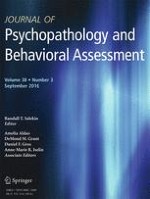09-11-2015
Examination of the Association Among Personality Traits, Anxiety Sensitivity, and Cannabis Use Motives in a Community Sample
Gepubliceerd in: Journal of Psychopathology and Behavioral Assessment | Uitgave 3/2016
Log in om toegang te krijgenAbstract
Personality factors, such as neuroticism, are important for understanding motives for cannabis use; however, few studies have examined the role of neuroticism in the context of other personality factors, or possible mechanisms accounting for an association between neuroticism and motives for use. The present study examined concurrent associations between personality traits (i.e., conscientiousness, extraversion, agreeableness, and neuroticism) and cannabis use motives, and the role of anxiety sensitivity (AS) in the association between neuroticism and coping cannabis use motives. Seventy young adults endorsing past-month cannabis use (58.6 % female, M
age = 20.91) completed self-report measures. Linear regressions were conducted to examine the concurrent associations between personality factors and cannabis use motives. Higher levels of neuroticism, but no other personality traits, were significantly associated with greater coping (β = 45, p < .01) and expansion (β = 0.29, p = <.05) motives. Bootstrap analysis (10,000 re-samples) revealed that a significant portion of the relationship between neuroticism and coping motives was explained by AS (point estimate = 0.029, PB 95 % CI: 0.0089 to 0.0615). Greater neuroticism may result in heightened sensitivity to arousal, which may then increase motivation to use cannabis to alleviate such arousal.
